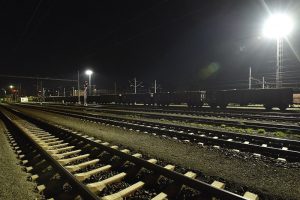Close cooperation between the Railway Infrastructure Administration (SŽDC) in the Czech Republic and ProAlter, s.r.o. Bratislava brought an interesting project. The SŽDC staff has long been troubled by old and largely non-functional light boards. Back in 2017, a pilot project was launched to assess the suitability of using LED technology for the construction of light boards intended for marking station buildings.
ProAlter, s.r.o. is the sales representative of LED-SOLAR, s.r.o. for SŽDC. The manufacturer of a complex railway lighting system was given the task of designing the construction of LED light boards to meet the demanding operating conditions of the Railways.
The start of the project was to assess the technical condition of the light boards currently used on the Czech Railways. Their basis is a supporting steel frame equipped with electrical equipment. The front plastic panels with the labels are anchored in an aluminium or galvanised steel frame. The single-sided or double-sided illuminated signs thus constructed are illuminated by linear fluorescent lamps. Ongoing problems with unsuitable construction and fastening materials, covering plastics and self-adhesive films with low durability have brought about the need to design new models of illuminated signs. The requirement to reduce energy consumption and the overall reduction in operating costs due to maintenance also weighed in. Therefore, the decision was made to use modern and economical LED technology.
Design of the construction of light boards
For the pilot project, two types of light boards were designed and manufactured by LED-SOLAR, s.r.o. Compared to the original light boxes with linear fluorescent sources, "edge" panels with light sources mounted in a frame and radiating into the side of the polycarbonate were tested. These were characterised by the high structural rigidity provided by the sandwich composition of the illuminated area. The result was a very elegant board with minimal thickness, which was safe and comfortable to handle during installation work.
The second design solution was a so-called 'backlight' board with a rear-emitting beam. This was based on LED modules placed on the back panel of the light box.
The assessment of both solutions was carried out on the basis of the deployment of alternative technical solutions of the light boards in real operation at the railway stations Prostějov and Štěpánov.
Winner of the internal competition
In the imaginary competition, the "backlight" boards clearly won. The main factors were operational reliability, uniformity of illumination of the illuminated area and, above all, the most significant saving of electricity, which amounted to 88% compared to fluorescent lamps in the tested models.









